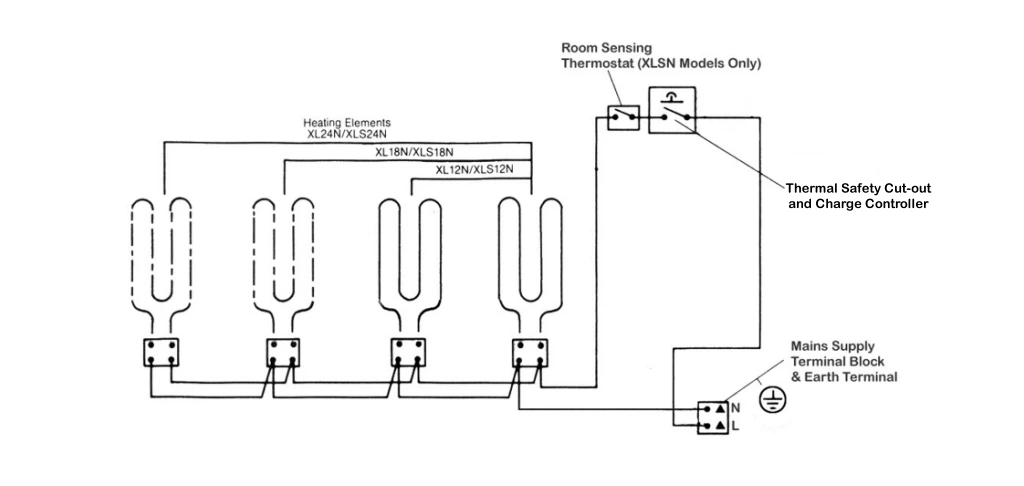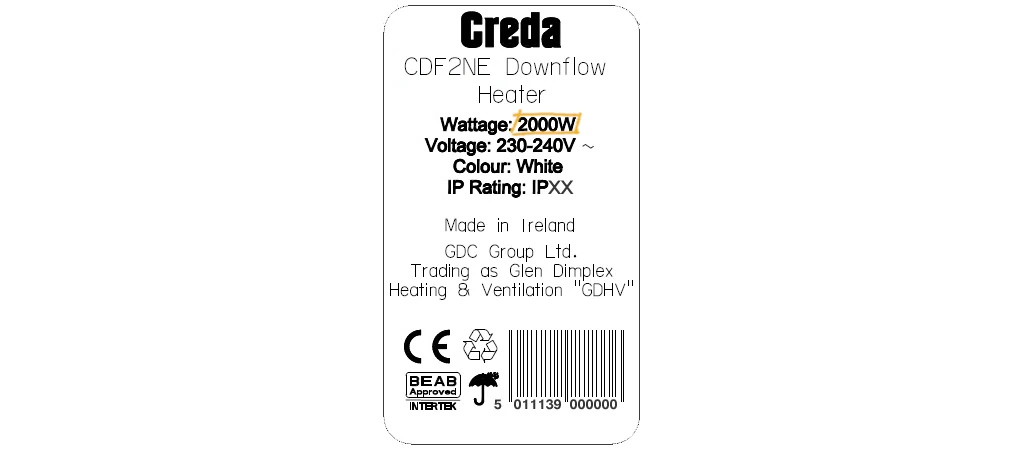A storage heater is an electrical heating appliance that, unlike traditional convection heaters or radiators, uses off-peak electricity to store and release heat.

Sometimes called a night storage heater, these appliances work well in environments requiring consistent heat with cheaper off-peak electricity tariffs.
Understanding the basic principles of how storage heaters work can help you make an informed decision about whether they are the right heating solution for you.
Advantages
Cost Efficiency. A storage heater provides heat at lower costs, with off-peak energy, saving you money on your heating bills.
Consistency. Storage heaters provide steady, even heat throughout the day, maintaining a comfortable temperature.
Reduced Peak Demand. Using storage heaters helps ease the strain on the electrical grid during peak hours.
Simple To Install. Flexible placement and minimal disruption. Storage heaters are self-contained, complete, pre-assembled units that can be free-standing or wall-mounted—no intricate, time-consuming installations involving pipes, boilers, or other external components.
Disadvantages
Storage heaters, with limited on-demand flexibility, are best suited for spaces with a predictable and steady need for heat.
Only suitable for properties with off-peak electricity tariffs.
Storage Heater Basics: How Do They Work?
Want to learn more about how a storage heater stores its heat? OK, this is the section for you.
Let’s explore the basic principles of a storage heater, their components, and functions to help you better understand how they work.
Core Components of a Storage Heater
Heat Storage Medium, The “Heat Battery”
First, we need to focus on the concept of the heat storage medium. To store heat for later use, we need a medium to transfer it to.

You can think of this as a battery, but instead of storing electrical energy, it stores heat.
Many materials store heat energy well, liquids, solids, and phase change materials. Most used in storage heaters are dense ceramic bricks that absorb and hold heat efficiently.
These bricks act as sponges for heat, soaking it up when electricity is abundant and affordable, typically during the night on off-peak electricity rates.
This dual-phase operation, with its “heat battery” core, is the cornerstone of the storage heater principle.
The “Heat Charging” Element

Electric heating elements heat the bricks during the charging phase.

Electric heating elements in storage heaters convert electrical energy into heat through resistance.
Like rubbing hands together produces heat, pushing electricity through a high-resistance material also produces heat.
The more electricity flows through the elements, the hotter they become.
As the heating elements within the storage heater warm, the storage medium stores the resulting thermal energy.
Thermostats and Controls
The key to making storage heaters efficient and user-friendly is heat control.
To recap, we’ve got a “heat charger”, the heating elements (input) and a “heat battery”, represented by the bricks (output).
To manage this heat input and output, we need thermostats and controls.

Thermostats and controls form the intelligence behind the efficient operation of storage heaters.
They monitor the heat storage medium temperature, orchestrate heating element activity, and offer timer and temperature-based controls.
Charging and Discharging Phases
Storage heaters operate on a dual-phase cycle: charging and discharging.
Charging Phase: During off-peak hours, typically at night, the storage heater draws electricity from the grid. The heating elements heat the core material and stores thermal energy for later use.
Discharging Phase: Throughout the day, the storage heater releases the stored heat into the room without consuming additional electricity. The heat release rate is controlled by the thermostat and user settings, ensuring a consistent and even heat source.
What Are the Different Types Of Storage Heaters?
There are several types of storage heaters; here are some of the common types, their features, and their advantages:
- Manual Storage Heaters: These are the most basic and traditional storage heaters with manual controls adjusting the amount of heat stored and released.
- Automatic Storage Heaters: These replace old storage heaters, boasting built-in detection and automatic control adjustments for a more convenient, consistent, and efficient temperature release throughout the day.
- Combination Storage Heaters: These are automatic storage heaters with a built-in convection heater for on-demand heating, suitable for spaces with fluctuating heating requirements.
- High Heat Retention with Secondary Direct Acting Heaters (HHRSHs): The latest technology in high heat retention, digitally controlled, fan-assisted storage heating with built-in secondary direct heating. Up to 27% cheaper to run than standard storage heaters**
*https://www.dimplex.co.uk/professional/heating-cooling/high-heat-retention-storage-heaters
*https://www.dimplex.co.uk/sites/default/files/running_cost_report_2014.pdf
Is a Storage Heater Right for Me?
In this article, we’ve talked about the different types of storage heaters, how they work and their advantages.
However, there are many other options for heating your home. Carefully consider all your options before deciding on how to heat your home.
Here are some frequently asked questions:
Are storage heaters more efficient than gas central heating?
The answer is almost always no.
Source: https://www.thegreenage.co.uk/storage-heaters-still-place-home/
What is a low-carbon alternative to storage heaters?
Air source heat pumps are low-carbon heating solutions that use less electricity, but initial investment is much higher.
Can I use storage heaters with solar panels?
Indeed, intelligent storage heaters can harness any excess photovoltaic production you may have, transforming solar energy into stored heat.
How can I calculate the cost of running a storage heater in my home?

- Calculate the KWh (Kilowatt hour usage). Multiply the heater’s power rating in kW (Kilowatts) by the hours the heater will be in the charging phase.
KWh=Power (kW)×Time (h)
- Calculate the Cost. Multiply the KWh value by the cost per kilowatt-hour found on your electricity bill.
Cost=KWh×Cost per KWh
Where can I buy storage heater spares?
UK Spares has a wide range of storage heater spare parts from brands like Creda, Dimplex, Elnur, Unidare and Vent Axia.
